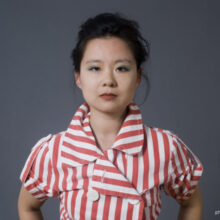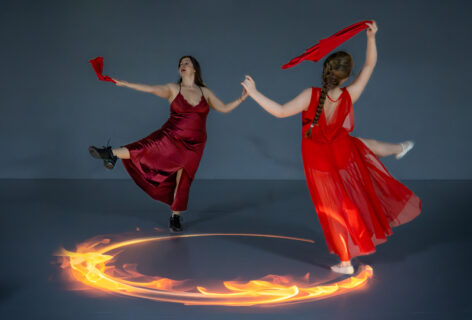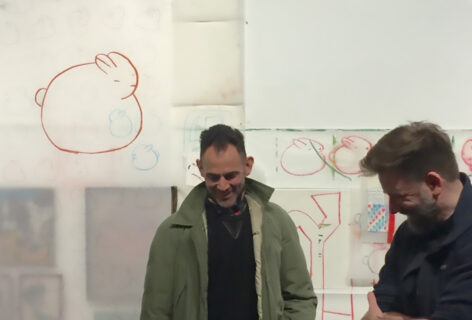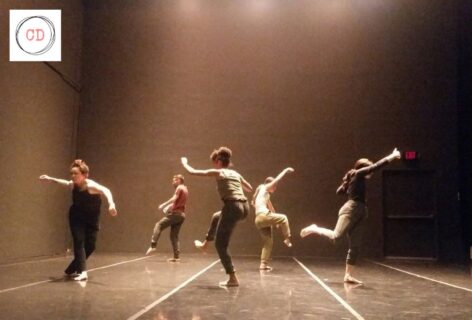In March 2023, I spent time at the same residency as Sam Kim and a conversation she had with another AAPI choreographer—Donna Uchizono—in the aftermath of the Atlanta shootings. It was the first time that Sam and Donna had connected, and they shared experiences which few others in the field could relate to. I asked Sam if she’d be comfortable with a public conversation for CC. I wanted to uplift this dialogue because their conversation was unprecedented and historic.
Instead of recreating this original conversation, Sam invited Justin Cabrillos to talk about their shared and divergent experiences as AAPI choreographers in the experimental dance scene. What follows is a conversation that tells us about loneliness, real friendship, and when we get to see work as separate from ourselves.
—Londs Reuter, CC Co-editor
This article has been edited for the purpose of publication.
To listen to the full audio of this conversation, please click here.
Sam Kim
You sent me a question…“I’m curious about the pressure to make a certain kind of work, that we both may or may not experience or might experience to different degrees.”
I hear you. I have to think back over decades as to whether or not anybody has ever explicitly tried to guide me to racialize my work. And I am coming up empty. I know exactly what you’re talking about, though. That pressure is real.
Justin Cabrillos
I want to acknowledge the privilege of being able to separate: is this about the work or myself? Because I have felt the kind of pressure from mentors and people in institutional contexts… where the notes on the work have to do with: Why not kind of tie in some colonial aspects? Why not talk about your trauma?
You know, I’ve had the experience of directly being told, not for the sake of getting any awards or grants or anything like that… Almost like— fishing for what the politic or agenda might be? I’m curious about that. There’s pressure to have the dance be *about a thing*
SK
Gross. What was the context for this feedback?
JC
It was more in an educational context. I was being guided in a particular direction by someone who was not Filipino. It was a white person who was gently nudging me in that realm.
I think part of my mixed feelings about how to address politics (or not) is a suspicion: Who would it serve? Who is it for?
I experience what you were saying earlier, with different institutions. There’s just—maybe one? two? zero?—in this program or in this selection process. It makes me aware of what my body represents, rather than what it is. I don’t think the two are separate. Certain layers of my body feel more important to institutions.
I don’t feel competitive, personally. But I do think it’s related to this felt pressure to make certain kinds of work. It provokes the question: If I *were* to make certain kinds of work, what would that do?

Photo of Justin Cabrillos, Reed Rushes, and Matt Shalzi by Peter W. Richards.
SK
The space hasn’t even been there to have a conversation like this ’til recently, so, without even knowing it, I have been waiting—I have been waiting for somebody like you. Like, would the day come when younger choreographers would have the capacity to hold all of this nuance, and articulate these complex issues? It’s such a huge fucking relief to me that this day has finally arrived, because it’s been profoundly isolating and lonely. You don’t even have the language for this sinister pressure/erasure-if-you-don’t-racialize your work. You don’t know how to name it, because you think nobody else has experienced it, because you’re the only one!
And, now there actually are other people who have this expanded awareness and are capable of recognizing all the complexity and nuance. That’s given me hope and courage. I don’t know what I had been running on before… fumes or something… bereft of that kind of hope that things would actually progress in a really good way one of these days. So it feels like there has been some kind of critical mass that’s been reached, but I had no idea this moment would arrive.
I had no idea, because I didn’t even know I was alone! So I’m really glad that Donna Uchizono was like, “Wow! I’m alone,” and then it made me realize I was alone! So yeah, through my own channels…based on the level of trust and awareness I sense from people…I’ve been having honest, if challenging, conversations to effect change, bring some awareness to the lack of representation of AAPI in our field.
I talk about Cathy Park Hong’s book, Minor Feelings: An Asian American Reckoning, all the time to anyone who will listen––she’s a contemporary of mine, and it’s been great to get her take as an artist working in a completely different discipline. I’ve become buddies with other, younger AAPI artists working in other disciplines, and learned that they have actual cohorts, like, say, younger Korean-American writers. To which I say, “You have a cohort? THAT’S AMAZING. I am wildly jealous of you! But in the best way. I’m so glad that you’re not alone, and I’m so glad that you have support and I’m so glad you have models.
JC
It sounds like obviously you care.
SK
Yeah, I care. I don’t overtly address this in my dances, but you know, why do I have to? Why is that annoying assumption there? It doesn’t mean I’m apathetic. I do lots of things.
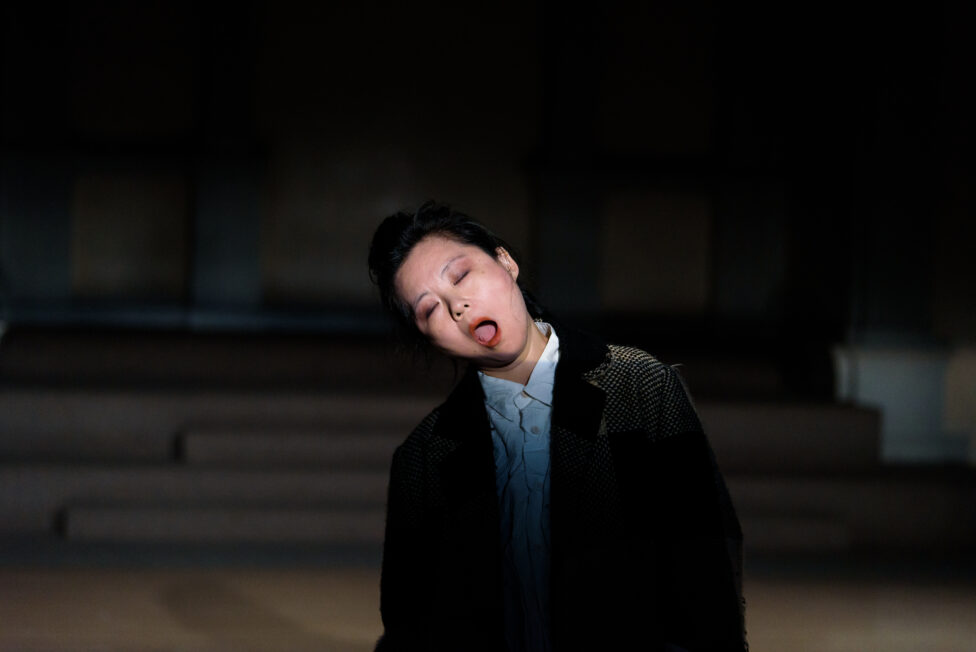
Photo of Sam Kim by Ryutaro Mishima.
SK
…One reflection of progress and change is the fact that you and I were recently the only two delegates to go to that GPS Exchange through Movement Research to Belgrade. When I found out that it was going to be you and me this time, one of my first thoughts was: OMG! Wow! We’re both AAPI! But, nobody else seemed to be like “Wow, yay, two AAPI!” Nobody was doing that. Movement Research wasn’t doing that––
JC
We were doing that!
SK
We were doing that! Toasting ourselves in Belgrade! (laughs) Nor was there the anxiety of ”We’re sending two AAPI? Oh shit! We fucked up. We can’t have more than one…” For better or worse, no one was paying attention. That was a… weird victory. It felt like “We’re just sending a Sam… we’re just sending a Justin… Just because.
JC
I think it’s great that it was two AAPI. The conversations we had, they felt like they could happen more so outside of New York. Because we were in a situation where, for so many reasons, we were trying to explain our struggles back in New York and in the US. It seemed like things came together in the right way for conversations happen.
SK
I agree. I think it was amazing kismet.
And it was just such a special group in such a special space. And, they heard us. You know? I don’t know about you, but I felt very heard.
JC
Yeah, definitely.
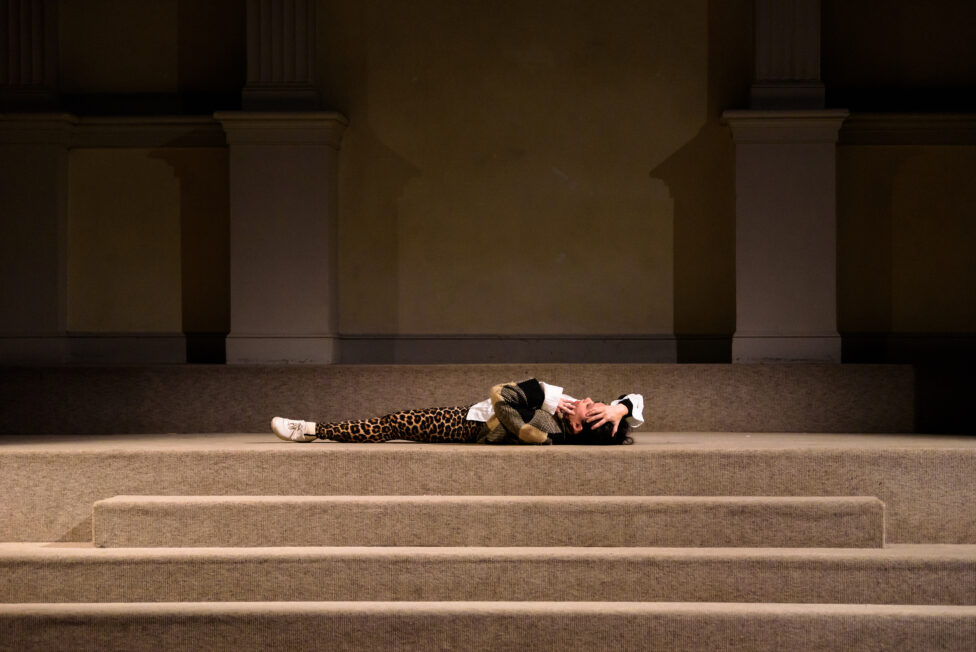
Photo of Sam Kim by Ryutaro Mishima.
To listen to the full audio of this conversation, please click here.



